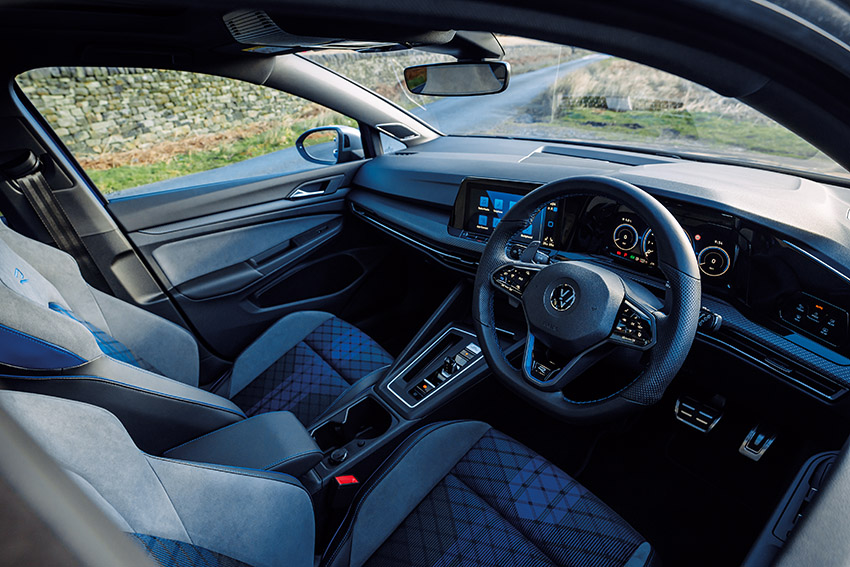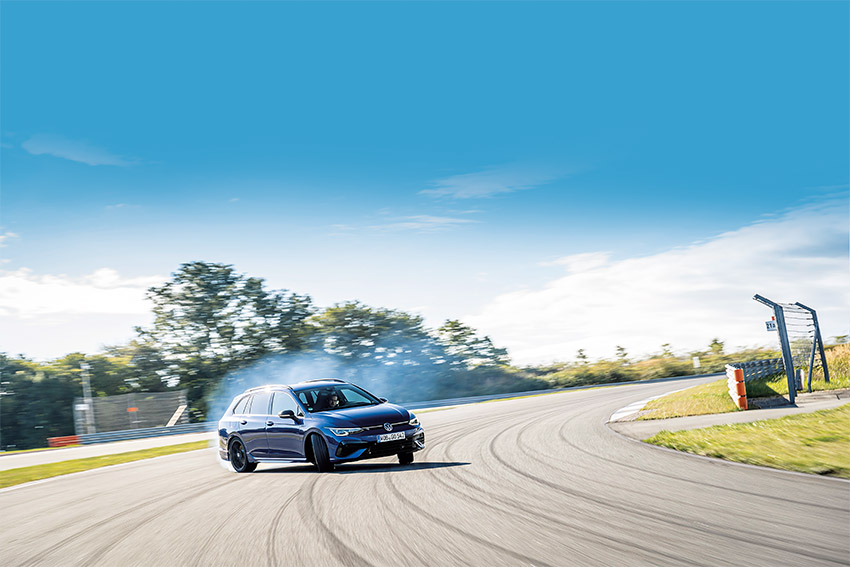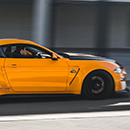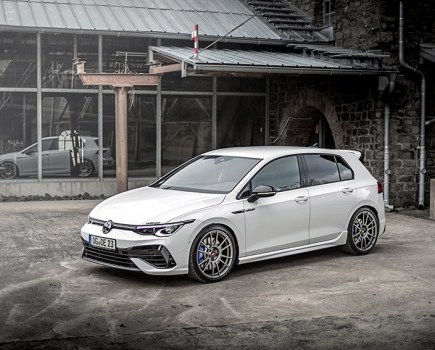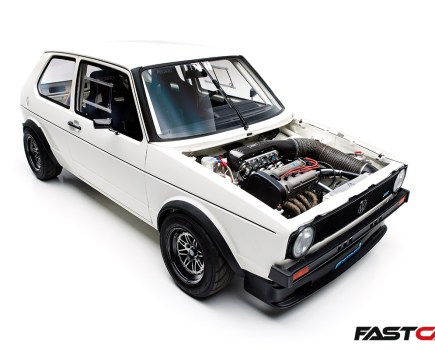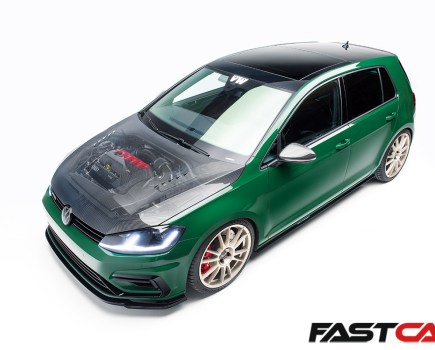The new Golf R Estate Mk8 is the latest in a line of fast estates from the Volkswagen model range. Here’s your guide to fast VW estate cars.
Guide from Performance VW magazine. Words: Neil Birkitt. Photos: Volkswagen Ag & various.
Think fast estate cars in the VW group and you’d naturally gravitate towards Audi, the brand that kicked it all off with the 5-cylinder turbocharged S2 and RS2 Avant in the Nineties. Audi has since followed through with high-performance Avant and Sportback versions of virtually every model from the 100 (S4), A4 (RS4), A5 (RS5), A6 (RS6) and A3 (RS3) with all-electrics to follow.
For the Volkswagen brand, the emphasis on high-performance was carried primarily by the ‘hot hatch’ models, the Golf GTI and Polo GTI as well as the Golf R32 and Golf R, and to a lesser extent the Lupo GTI and Up! GTI. We have to look a little further before we realise that there were also quite a few fast VW estate cars. Below, we go through all generations of fast VW estate cars, finishing off with the latest, and arguably greatest, the 2022 VW Golf R Estate Mk8.
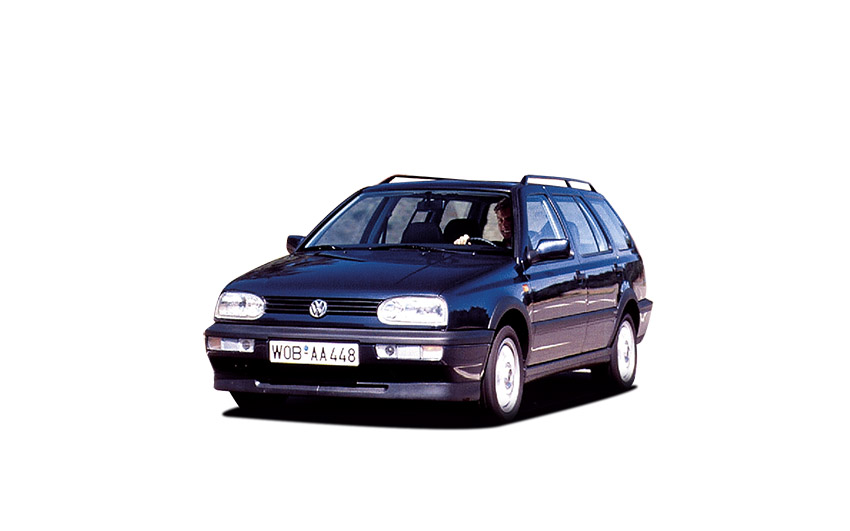
Fast VW Estate cars
VW Golf Estate Mk3
Kicking things off in our guide to fast VW estate cars is the Mk3 Golf. The concept of a high-performance four-wheel drive estate car is not entirely new to the Volkswagen range. As far back as 1995 there was a version of the Mk3 Golf Estate that that was powered by a 2.9-litre 12-valve version of the VR6 engine, in conjunction with a 5-speed manual gearbox and syncro (viscous coupling) four-wheel drive system, rolling on 6.5J x 15-inch rims with 205/50 R15 tyres.
With a peak power output of 190 hp at 5800 rpm, maximum torque of 245 Nm at 4200 rpm and with a kerb weight of 1455 kg it was claimed to be capable of 0-62 mph in 8.1 seconds and a top speed of 138 mph.
Although never officially imported into the UK, it is known that several examples were privately imported from Europe and may still be in use to this day.
There were also syncro (model designation) versions of the B3 and B4 Passat Estate, powered by the 174 hp 2.8 VR6, also with the viscous coupling syncro transmission, although only the front-wheel drive version officially made its way to the UK market, with very few if any surviving today.
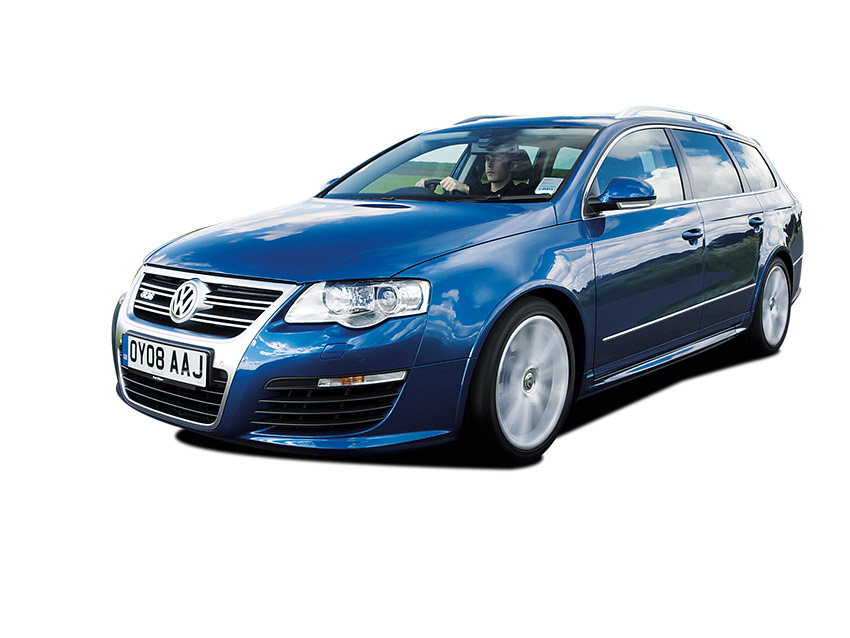
VW Passat B5
The B5 Passat was available here in the UK from 1998, in both saloon and estate body styles, with the 2.8-litre V6 engine and four-wheel drive. Developing 193 hp and 280 Nm torque it had a top speed of 144 mph and could accelerate from 0-62 mph in 5.1 seconds. Although it was badged ‘syncro’ when first introduced, the four-wheel drive system was actually the Audi quattro derived Torsen-diff permanent four-wheel drive. It was later rebadged 4Motion, consistent with Volkswagen’s brand nomenclature, also adopted for the Mk4 Golf V6 and R32.
Combining performance with economy there was also a B5 Passat Estate with the 150 hp 2.5-litre V6 TDI engine, good for 137 mph, 0-62 in 8.5 seconds, 30-50 mph three seconds faster than a Golf GTI, and capable of over 40 mpg overall, although without the benefit of four-wheel drive.
The B5 Passat could also be equipped with the 4.0-litre W8 engine (essentially siamesed twin V4 units) with Torsen diff four-wheel drive and either 6-speed manual or 5-speed Tiptronic auto transmission, with the manual capable of 0-62 mph in 6.8 seconds and a top speed of 155 mph.
Late 2006 saw the debut of the Passat R36 at the Essen Motor Show. Available in both saloon and estate versions, the R36 was powered by the 300 hp 3.6-litre version of the VR6 engine, in conjunction with 6-speed DSG gearbox and the Haldex four-wheel drive system. Introduced to the UK in 2008, the Passat R36 Estate was capable of 0-62 mph in 5.8 secs and a top speed of 155 mph. At the same time, there was also a 250 PS 3.2 VR6 version of the B6 Passat with DSG transmission, good for 153 mph and 0-62 mph in under 7 seconds.
While there were also performance versions of both the B6 and B7 Passat Estates, including an off-road style Alltrack version, of particular note is the B8 version of the Passat Estate GT from 2015, powered by a twin-turbo 2.0-litre TDI diesel engine, developing 240 hp / 500 Nm, in conjunction with 7-speed DSG transmission and Haldex coupling four-wheel drive. Capable of 0-62 mph in 6.2 secs and a top speed of 147 mph it could also achieve an easy 45-50 mpg overall, maybe even better on a long cruising run, proving that – as far as performance and economy is concerned – ‘you can have your cake and eat it’.

VW Golf RaVe 270
Clearly a precursor to the Mk7 Golf R Estate was the RaVe 270, a concept car based on the Mk5 Golf Estate which Volkswagen unveiled at the Essen Motor Show in 2007. The Golf Variant RaVe 270 was a showcase for both design and technology, the 270 representing the power output of 270 hp for the four-cylinder 2.0 TSI engine. With 6-speed DSG transmission and Haldex four-wheel drive it was claimed to be capable of 0-62 mph in under 6 seconds and a top speed of 155 mph.
Amongst its special features were the new RNS 510 radio-navigation system and a high-end 1400 Watt sound system comprising a total of 13 speakers, supplied via three powerful output amplifiers. A strong 880 Watt subwoofer and two other 250 Watt subwoofers were mounted in the rear load space, along with two 12-inch TV monitors suspended from the tailgate when it was opened.
External styling features were a deep front bumper/spoiler, sill panels, xenon headlights, modified tail lights, a roof spoiler, twin tailpipes on either side, suspension lowered by 20 mm and 19-inch Zaragoza alloy wheels.
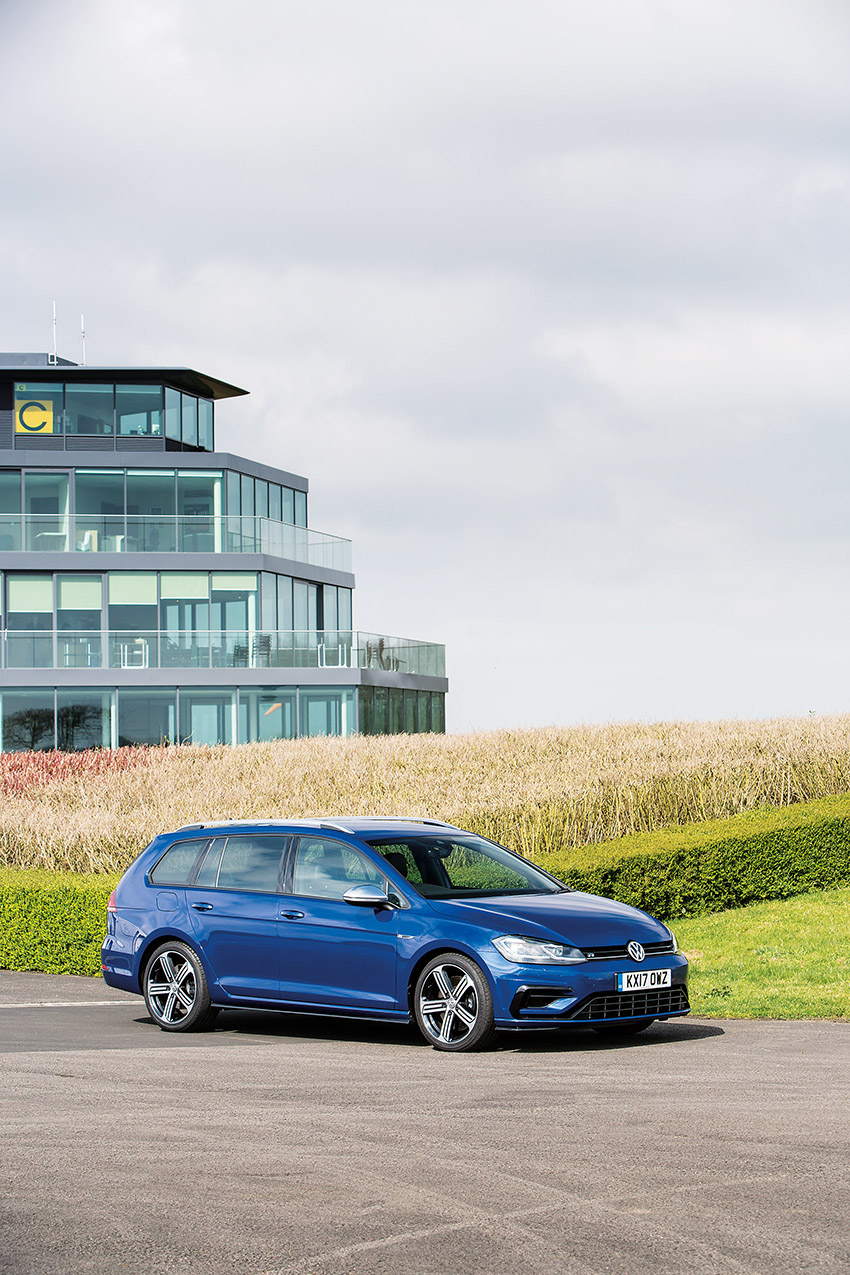
VW Golf R Estate Mk7
Given that the Golf GTI and the Golf R hatchbacks took such a prominent role in the model range for so many years, there was quite a sea change in 2015 when Volkswagen introduced an estate version of the Mk7 Golf R. With virtually the same performance and dynamic ability as the hatchback R it was a true all-rounder, offering power and pace along with greater practicality and everyday usability.
The Mk7 Golf R had already established itself as the ‘must-have’ hot hatch. Quickly eclipsing the Golf GTI it soon buried any of the reservations that had been prevalent when the 2.0-litre 4-cylinder turbo’d Mk6 Golf R had replaced the 3.2 VR6-engined Mk5 R32.
Much of its advantage was due to the prodigious performance provided by the 300 hp / 380 Nm EA888 2.0-litre turbo 16-valve engine, in conjunction with DSG transmission and Haldex coupling four-wheel drive system. Even with the potential for acceleration from 0-62 mph in under 5.0 seconds and a top speed of over 155 mph, the Golf R could still return between 30 and 40 mpg when driven conservatively.
The Mk7 Golf R Estate only added to that, with the greater practicality of four doors and the estate bodyshell, along with similar features and specification and very little if any loss of dynamic capability. Indeed, Volkswagen staged the international press launch of the R Estate at the demanding Ascari race circuit in Spain, where it was soon lapping at much the same pace as the R hatchback. Some drivers even considered the handling of the estate to be superior, with the additional length of the rear bodyshell providing the ability to ‘swing’ the car around the sharper corners.
The Mk7.5 facelift at the beginning of 2017 saw the power output increased to 310 hp, which reduced the 0-62 mph time to 4.9 seconds, while the top speed remained at 155 mph as standard, although 168 mph could be achieved with the Performance package. At the end of 2018, due to emissions controls, the engine output was limited to 300 hp although the actual performance seems to have been hardly affected.
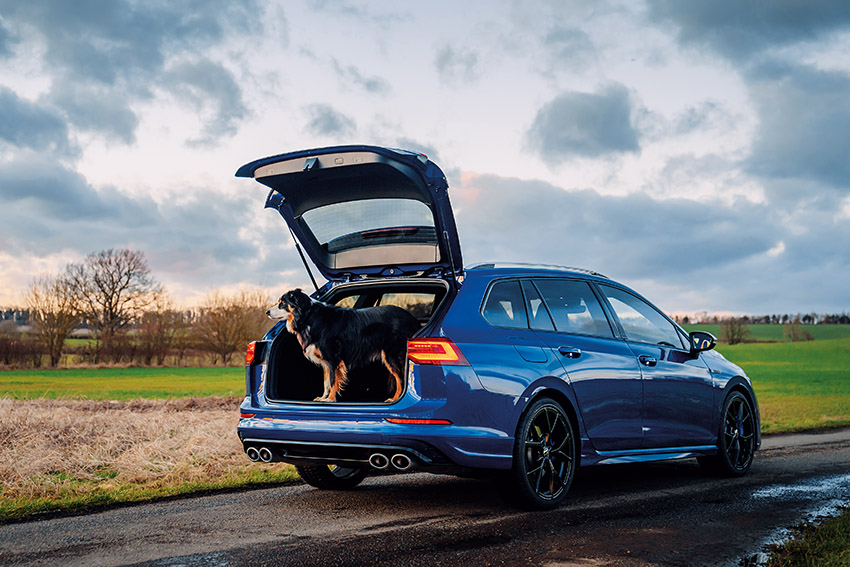
VW Golf R Mk8 Estate
Now, with the eighth generation of the Golf range, the R Estate has returned to the Volkswagen UK line-up for 2022, still with the same attributes of performance and practicality but now with an enlarged wheelbase and slightly longer bodyshell, providing greater legroom and carrying capacity.
The new 8R Estate model is 4644 mm in length, with a wheelbase of 2678 mm, increases of 349 mm (13.75 inches) and 66 mm (2.5 inches) respectively, compared with its predecessor. It is 1789 mm wide and 1466 mm high, both dimensions the same as the current Golf 8R hatchback.
Relevant content – VW Golf Mk8 modifications guide
These increases in length provide more room for rear seat passengers, with maximum rear legroom enlarged by nearly 1.5 inches, from 903 mm to 941 mm, and greater carrying capacity. The volume of the loadspace is 611 litres with the rear seats upright and 1642 litres with the rear seats folded flat, an improvement over the previous model’s 605 litres and significantly greater than the 8R hatchback’s 374-litre boot capacity.
Despite being larger and heavier, the 8R Estate still performs on a par with the hatchback version. It is powered by the same advanced EA888 evo4 2.0-litre four-cylinder direct-injection petrol engine mated to a 7-speed DSG transmission and 4MOTION all-wheel drive system. Volkswagen quotes a figure of 4.9 seconds for acceleration from a standing start to 62 mph (just 0.2 slower than the hatchback R) and a potential top speed (limited) of 155 mph.
As well as the obvious advantages of four-wheel drive, the driving dynamics of the latest R models have been further improved with the introduction of R-Performance Torque Vectoring. A new differential on the rear axle distributes drive not just between the front and rear axles, but also variably between the two rear wheels, with as much as 100 per cent of the drive torque directed to the rear wheel on the outside of a bend if necessary. Braking is also further improved, with an increase in the size of the front brake discs from 340/30 mm to 357/ 34 mm.
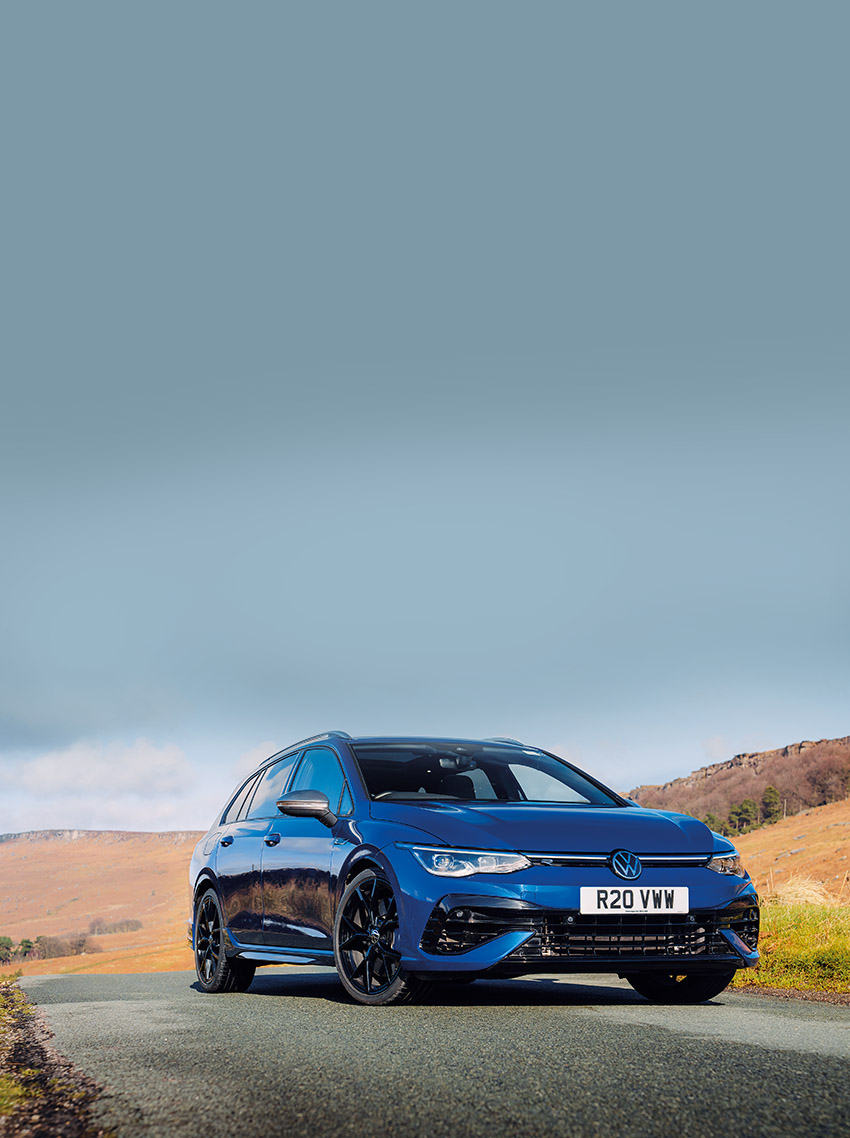
In conjunction with the all-new Vehicle Dynamics Manager and XDS electromechanical differential locks, allowing greater agility and a virtual reduction in understeer, this inevitably contributes to what Volkswagen modestly describes as ‘even greater driver involvement and dynamic appeal’.
Externally, the Golf R Estate is distinguished by its 7.5×18-inch ‘Jerez’ alloy wheels with 225/40 R18 tyres, full R body kit, blue strips in the radiator grille, a roof spoiler and quad chrome-tipped exhaust pipes protruding from the high-gloss black diffuser panel. The brake callipers are finished in Volkswagen R blue, also featuring the R division logo, while the door mirror housings are finished in a matt chrome effect.
Inside, the driver and front seat passenger benefit from sports seats with integrated head restraints, featuring a ‘Sardegna’ design in black-blue cloth, unique to the new R models, while the outer panels are finished in ArtVelours.
It also has a bespoke heated multifunction steering wheel, with a new R button which allows the driver direct access to the range of drive modes as well as extended paddle shifters for finger-tip control of the gearshifts, without having to take their hands from the wheel.
The current UK list price (RRP) of the Golf R Estate is from £43,175 RRP on-the-road, with options including the R Performance Pack, which increases the top speed to 270 kph (168 mph), provides 19-inch ‘Estoril’ alloy wheels with 235/35 R19 tyres, adds ‘Drift’ and ‘Special’ driving profiles and a larger rear spoiler.
Interestingly, there are two other alternatives if you’re in the market for a current performance VW estate model. The off-road styled Golf Estate Alltrack also features 4MOTION all-wheel drive and is powered by a 200 hp 2.0-litre TDI diesel engine with 7-speed DSG, good for 140 mph along with 50 mpg plus (priced from £35,560 RRP OTR).
There is also an R version of the Arteon Shooting Brake, with the same 320 hp / 420 Nm 2.0 TSI powerplant and 7-speed DSG 4MOTION drivetrain as the Golf R, also good for 0-62 mph in 4.9 seconds and 155 mph, albeit with a higher level of standard equipment and the rather heady price of £52,435 RRP OTR.
